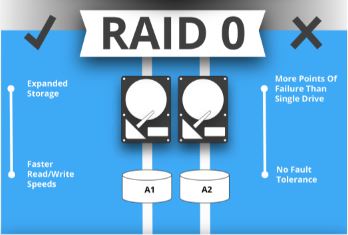

- #Softraid raid has a caution sign how to
- #Softraid raid has a caution sign install
- #Softraid raid has a caution sign software
- #Softraid raid has a caution sign trial
- #Softraid raid has a caution sign Pc
However, with regular backup and adequate measures (discussed below), you can avoid data loss due to RAID failure. The most common reasons for RAID failure are hard disk errors and human errors. Get a separate external disk(s) to save the recovered files and avoid data overwriting? RAID Failure Prevention Tip WARNING: Never select any RAID disk, which is a part of the reconstructed RAID array, to save recovered data.
#Softraid raid has a caution sign software
#Softraid raid has a caution sign Pc

#Softraid raid has a caution sign install
Install the software on your Windows machine and then follow these steps: The software recovers lost, deleted, and formatted data from any Windows-based RAID 0, RAID 5, and RAID 6 server. To reconstruct a failed RAID and recover data safely, you need an advanced RAID drives data recovery software such as Stellar Data Recovery Technician. Step 4: Reconstruct Broken, Corrupt, or Inaccessible RAID Server for Recovery If the health is poor or SMART shows warnings, use ‘ Clone Disk’ option to clone your RAID disk. The Drive Monitor displays overall disk health, performance, temperature, and SMART status of the disk. For better and deeper insights about the disk, install the demo version of Stellar Data Recovery Technicianand go to More Tools>Drive Monitor. Use a tool such as CrystalDiskInfo to check the SMART status of RAID disks. RAIDs do fail and may cause permanent data loss, sometimes beyond recovery. IMPORTANT NOTE: RAIDs are not backup or an alternative to backups. In such a case, immediately back up your data from the RAID before replacing the failed RAID drive to avoid multiple disk failure. For instance, in a RAID 5 array, if a disk has failed, the RAID enters into degraded mode and loses its fault-tolerance.
#Softraid raid has a caution sign trial
Do not attempt any hit & trial methods, especially if you don’t know what you are doingīefore anything else, backup data from the RAID server, if it’s accessible.Do not attempt to rebuild a RAID 5 or RAID 6 array with more than one disk failure.Do not change the disk order in the array.Never run CHKDSK command on a RAID array to fix RAID errors or after RAID crash.If a RAID (RAID 0, 5, or 6) server fails, breaks or shows errors, follow the steps mentioned below to reconstruct the RAID and recover data safely.
#Softraid raid has a caution sign how to
How to Reconstruct a Failed RAID Array without Data Loss In such a case, changing to a new RAID controller doesn’t work as RAID metadata is typically tied to the particular RAID controller. The system may fail to detect RAID partitions. A RAID array with older or ageing drives may fail to reallocate bad sectors, which can lead to data corruption and RAID failure.Ī RAID server may crash due to failing drive, software error, and a problem with the RAID controller.Ī hardware RAID controller may show errors due to problems with the hard drive or after RAID rebuild if the new drive is added to the array incorrectly. If you are experiencing frequent read/write errors while accessing or transferring data from RAID, it indicates an underlying problem with your RAID array that may lead to data loss.ĭata corruption may occur due to bad sectors that appear on the disk with time and usage. Sometimes, replacing a failed RAID drive incorrectly in a RAID array may lead to partition loss. Other factors, such as power surge, hardware or software errors, bad sectors, can also cause partition loss. RAID partition loss may happen due to virus or malware intrusion, which can corrupt the header of a RAID partition and make it disappear. The chances of a RAID server failure can be easily analyzed by checking the condition and performance of the associated RAID disks by using an open-source tool like CrystalDiskInfo.īeside RAID disks, there are a few other symptoms of RAID failure that you may observe when a RAID is about to fail. Symptoms of RAID failures are closely related to symptoms of the hard drive failure that are used in the RAID array. could also break or corrupt a RAID array and cause partition loss. Other errors such as human errors, controller failure, abrupt shutdown, power loss, or power surge, etc.

A RAID may break or become inaccessible due to one or more disk failure or related errors-leading to significant data loss and downtime. However, the mechanical nature of hard drives makes RAID configuration prone to failure. RAID arrays are quite robust and reliable data storage solution to store business data and run critical business tasks or applications without any problem.


 0 kommentar(er)
0 kommentar(er)
